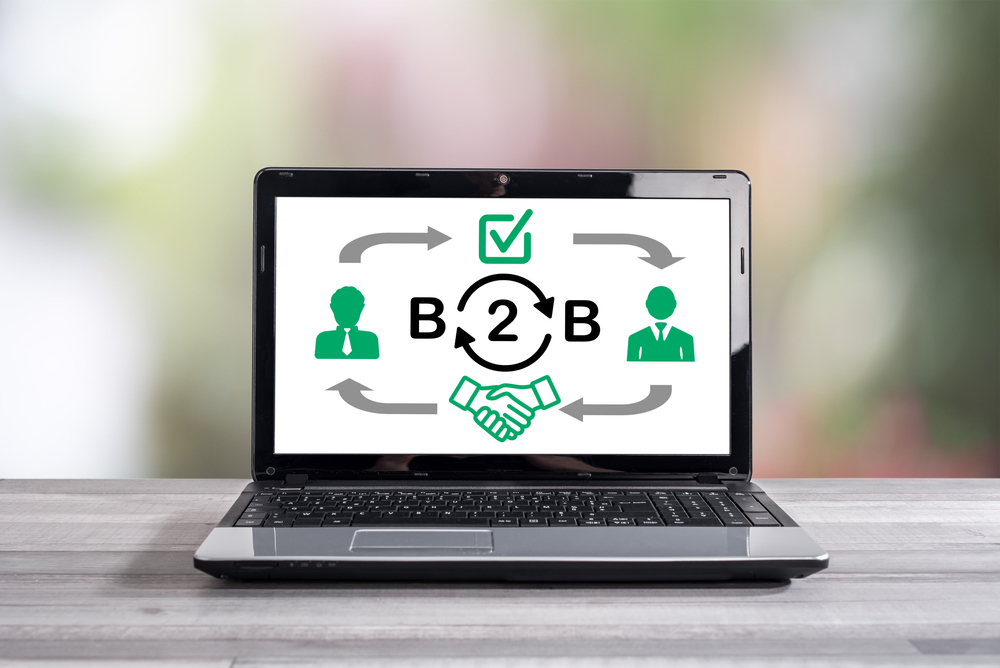20 Nov

A well-planned and well-executed B2B marketing strategy is key to building long-term, mutually beneficial relationships with other businesses or professionals. Whether you are marketing to hospitals, doctors, lawyers, or real estate agents, a tailored approach can make all the difference.
So, how can you build effective strategies for B2B marketing? Before we go into the specific steps, let’s explore the basics first so we can have a good foundation. Then, we’ll work our way towards how businesses like yours can harness B2B marketing in your lead generation efforts.
What is B2B Marketing?
Business-to-business marketing refers to the strategies companies use to sell their products or services to other businesses or organizations. Buyers are typically C-suite or director-level professionals. Essentially, if your customers are other key decision-makers, you need to take a B2B marketing approach to drive growth.
It’s important to note that B2B marketing strategies no longer follow the traditional “lead generation, sales, and close” format. Due to technological advancements and the pervasiveness of digital spaces, businesses find it more challenging to keep up with these trends and adjust their strategies accordingly.

What Makes B2B Marketing Different?
You might find yourself asking what makes B2B marketing more nuanced other than its target audience. One key difference is that the sales cycle tends to be longer. Buyers are responsible for making critical business decisions and solving complex challenges. This often requires a great deal of time and careful deliberation. A B2B marketing strategy needs to be robust and compelling enough to guide potential customers throughout the entire buyer journey.
Let’s explore how that looks by simplifying B2B marketing through a three-tiered funnel.
The B2B Marketing Funnel
Top of the Funnel (TOFU)
The Top of the Funnel is where potential customers first become aware of your brand and offerings. The primary goal at this stage is to attract a broad audience and generate interest.
An example of B2B marketing at the top of the funnel might be hosting a free webinar on a relevant topic or publishing an educational blog post. Remember, the goal here is NOT to close deals yet but to increase your visibility.
Middle of the Funnel (MOFU)
The Middle of the Funnel is where leads have shown interest in your offerings and are actively considering their options. The goal here is to nurture these leads by providing more detailed information and building relationships.
A common but effective middle-funnel marketing tactic is email marketing. Use targeted email campaigns to provide valuable content, such as case studies or whitepapers, that address the specific needs of your leads. This helps keep your brand top-of-mind. This is where a B2B contact database would come in handy as you’re guaranteed to connect with key decision-makers across the industries you are targeting.
Bottom of the Funnel (BOFU)
The Bottom of the Funnel is where leads are ready to make a purchase decision. The focus here is on converting these leads into customers by addressing any final concerns and reinforcing their choice.
At this stage of the funnel, it’s important to go all in. This is a critical point at which B2B marketers should be prepared to close business deals and equipped with the materials they need to communicate clearly and persuasively. To be more convincing, businesses can offer product demos, highlight customer testimonials, or provide onboarding support.
Top B2B Marketing Strategies
Before developing your marketing plan, it’s crucial to know which strategies or channels are at your disposal. Consider a combination of these strategies to better reach your target audience.

Email Marketing
Email marketing allows businesses to communicate directly with their audience. Segmenting your email list helps you filter out irrelevant contacts and makes your strategy more precise. This ensures that your messages are relevant and tailored to the recipient’s needs. You can also personalize your emails to increase engagement rates. Instead of a generic greeting, an email might start with “Hi [First Name],” to capture attention.
You can follow that up with valuable content rather than just promotional material. For example, when marketing to real estate agents, you might send updates on market trends or property listings.
Account-Based Marketing
ABM involves tailoring your marketing efforts to specific companies rather than broader industries. Start by identifying high-value accounts that align with your ideal customer profile (ICP). This involves analyzing existing customer data to find similar companies that would benefit from your offerings. Next, develop tailored content that addresses the unique pain points of each account.

Social Media Marketing
Social media platforms like LinkedIn, Twitter, and Facebook are valuable tools for B2B marketing. Focus on building relationships and providing value. Share relevant content, engage with your audience, and participate in industry-specific conversations.
Search Engine Optimization
Search engine optimization involves optimizing your website and content for search engines. The goal is to increase your visibility by driving more organic traffic to your site. When developing your SEO strategy, focus on relevant keywords for your target audience. For example, if you’re marketing to lawyers, use keywords like “legal software solutions” or “best legal CRM for law firms.”

Paid Advertising
While organic marketing efforts like ABM and social media marketing seem more genuine, it wouldn’t hurt to invest in paid advertising to help accelerate your results. Paid advertising allows you to target specific industries or job titles.
How to Develop a Solid B2B Marketing Plan
Now that we’ve established what B2B marketing is and provided examples in each tier of the funnel, let’s discuss how to incorporate them into an overall plan.
1. Define Your Target Audience
Understanding who your ideal customers are is the foundation of any effective marketing strategy. For B2B companies, this involves identifying not just the businesses you want to target, but also the specific individuals within those organizations who will be making purchasing decisions.
For example, create buyer personas to understand their motivations and pain points. Are you selling medical equipment or patient management software? Then you should tailor your marketing to doctors and other healthcare professionals. Your strategies should be based on the needs and preferences of your target audiences.

2. Identify Your Unique Value Proposition (UVP)
Your UVP should clearly articulate what makes your product or service different from competitors. Do you offer transparent pricing? Do you have a proven track record? Focus on how your offerings can solve specific problems for businesses.
However, it’s not enough to simply say what sets you apart. You should clearly present a before and after; meaning convince the customer of how your product or service improves their situation. Persuade customers that once they experience the benefits, returning to their previous situation is not an option—they will see your offering as the only viable path forward.
For example, when advertising to chiropractors, your value proposition might emphasize the unique ways your product can help them manage their practice more effectively. You can persuade them that your product helps them save time and reduces administrative burdens, which are great pain points to address.
3. Outline Your Marketing Strategy Framework
Develop a comprehensive strategy that outlines how you will achieve your goals. Decide which channels (e.g., email, social media, ABM marketing) will be most effective for reaching your audience. Next, specify the tactics you will use within each channel.

4. Establish KPIs
Determine how you will measure the success of your marketing efforts. Choose metrics that align with your goals (e.g., conversion rates, lead generation numbers, engagement rates). Of course, it wouldn’t be possible to keep track of performance if you don’t have the necessary measurement tools. Ensure that you’re equipped with tools like Google Analytics or CRM systems to monitor performance regularly.
5. Execute Your B2B Marketing Plan
With everything in place, it’s time to put your plan into action. Begin implementing the B2B marketing strategies outlined in your plan. Regularly check performance against KPIs and make adjustments as needed.
6. Refine Future Strategies
After executing your marketing campaigns, evaluate their effectiveness and identify areas for improvement. Assess what worked well and what didn’t by analyzing performance data against your KPIs. Finally, use the insights to improve future campaigns.
With these steps, you can create and successfully implement B2B marketing strategies that drive results.
Elevate Your B2B Marketing
Ultimately, the key to creating a sound B2B marketing strategy is understanding your target audience and meeting their unique needs. B2B marketing is not casting a wide net in hopes of generating leads; it’s all about patience—patience to keep executing and refining campaigns, gaining customer trust and loyalty, and eventually turning meaningful engagements into actual sales. It’s a long and arduous process, but it’s all worth it in the end!
To enhance your marketing efforts, Leadz.biz offers a comprehensive B2B email list. With access to high-quality leads tailored to your specific market, you can streamline your campaigns and maximize your impact. Request a free trial today!